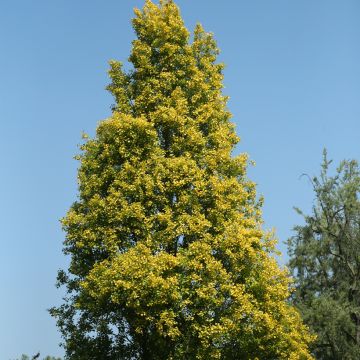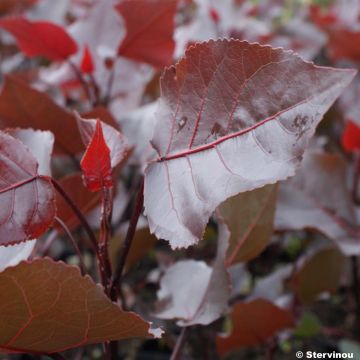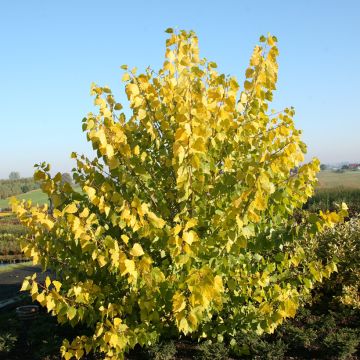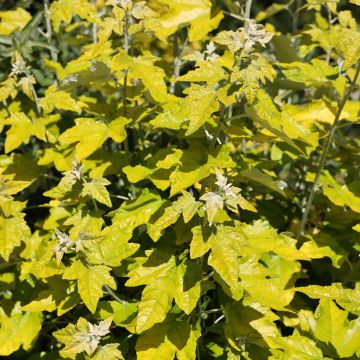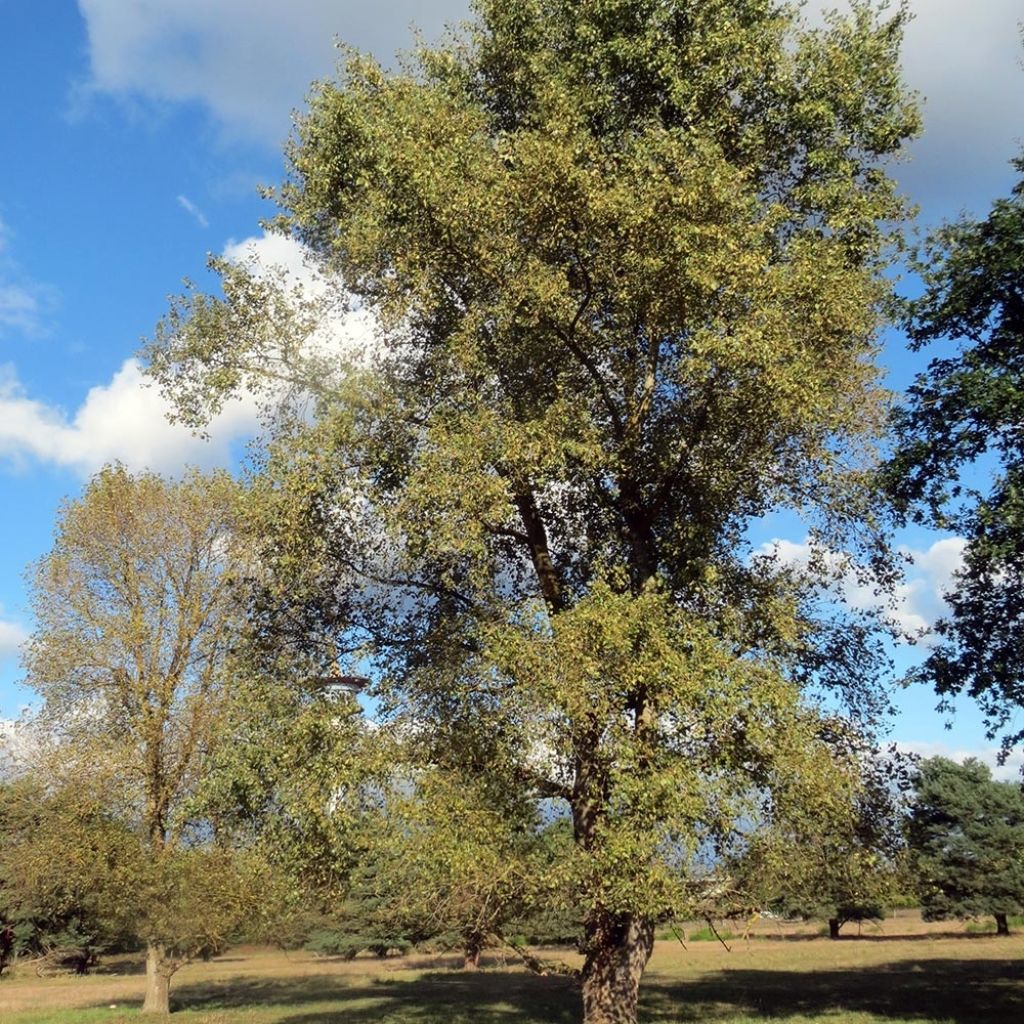

Populus canadensis Robusta - Canadian Poplar
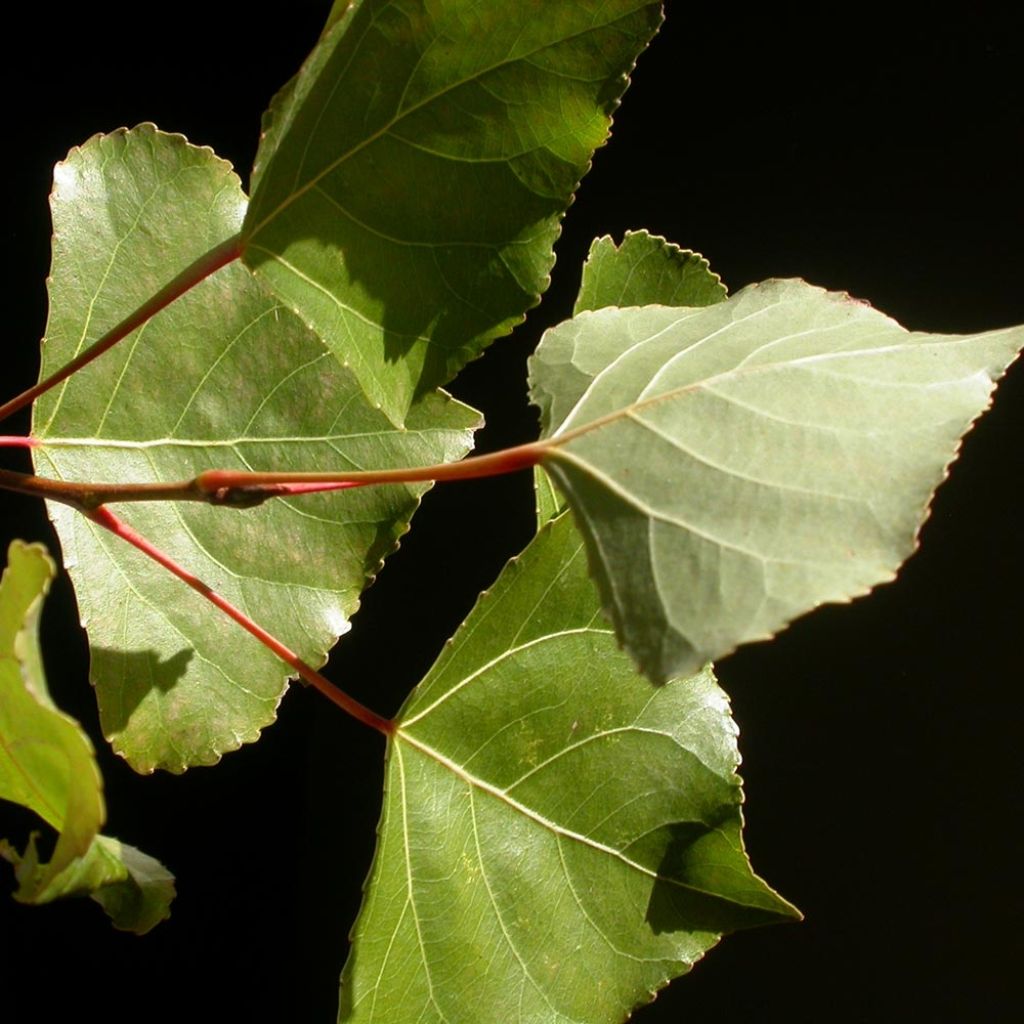

Populus canadensis Robusta - Canadian Poplar
Populus canadensis Robusta - Canadian Poplar
Populus x canadensis x euramericana Robusta
Canadian poplar, Hybrid black poplar, Carolina poplar
Why not try an alternative variety in stock?
View all →This plant carries a 24 months recovery warranty
More information
We guarantee the quality of our plants for a full growing cycle, and will replace at our expense any plant that fails to recover under normal climatic and planting conditions.
Oversize package: home delivery by special carrier from €6.90 per order..
Express home delivery from €8.90.
Does this plant fit my garden?
Set up your Plantfit profile →
Description
Populus × canadensis 'Robusta', also known as Populus x euramericana 'Robusta', is a variety of Canadian poplar that stands out for its remarkably vertical trunk that extends to the crown, which is conical and closed in shape. The deciduous foliage of this tree, which rustles pleasantly in the wind, turns a beautiful reddish-brown colour when it buds, and then yellow-grey in autumn. 'Robusta' is a male cultivar that grows quickly and is easy to cultivate. It is hardy, and adapts to any slightly acidic to calcareous fresh soil, including poor and light soil. Superb in alignment, it is perfect by watercourses.
The Canadian poplar belongs to the Salicaceae family. Native to North America, it is a spontaneous hybrid between Populus deltoides and Populus nigra. 'Robusta' is a cultivar that can reach a height of 30 m (98.4 ft) and 15 m to 16 m (49.2 ft to 52.5 ft) in width, with very rapid growth. This poplar develops a very straight trunk with upright lateral branches, forming an angle of 45°, regularly implanted at the same level on the trunk, in a ring. They make up an elongated crown, shaped like a tapered cone. The young branches are brown-green and finely hairy, then they turn reddish-brown. The grey-brown trunk bark is smooth, but it cracks and becomes wrinkled over time. In early spring, reddish-coloured young leaves appear, which unfold into triangular, leathery leaves, 10 cm to 12 cm (3.9 in to 4.7 in) long, with toothed edges. The leaves are dark green and shiny on the upper side, turning more or less yellow-grey in October. They fall quite early in the season. This 'Robusta' cultivar is a male plant that blooms in April. Its inflorescences are greenish-yellow catkins, 7 cm to 9 cm (2.8 in to 3.5 in) long. The root system is shallow, vigorous, horizontally spreading, very extensive, and sensitive to soil compaction on the surface. This cultivar is known for its good tolerance to poor soils, as long as they remain moist.
'Robusta' should be reserved for very large gardens or for landscaping parks due to its vulnerability to wind and the significant development of its root system. For these reasons, it should be planted far from buildings (at least 30 m (98.4 ft)). It would be perfect, for example, near watercourses or natural pools and large ponds. It could be associated with alder, willow, and ash, which also appreciate the proximity of water.
Report an error about the product description
Populus canadensis Robusta - Canadian Poplar in pictures
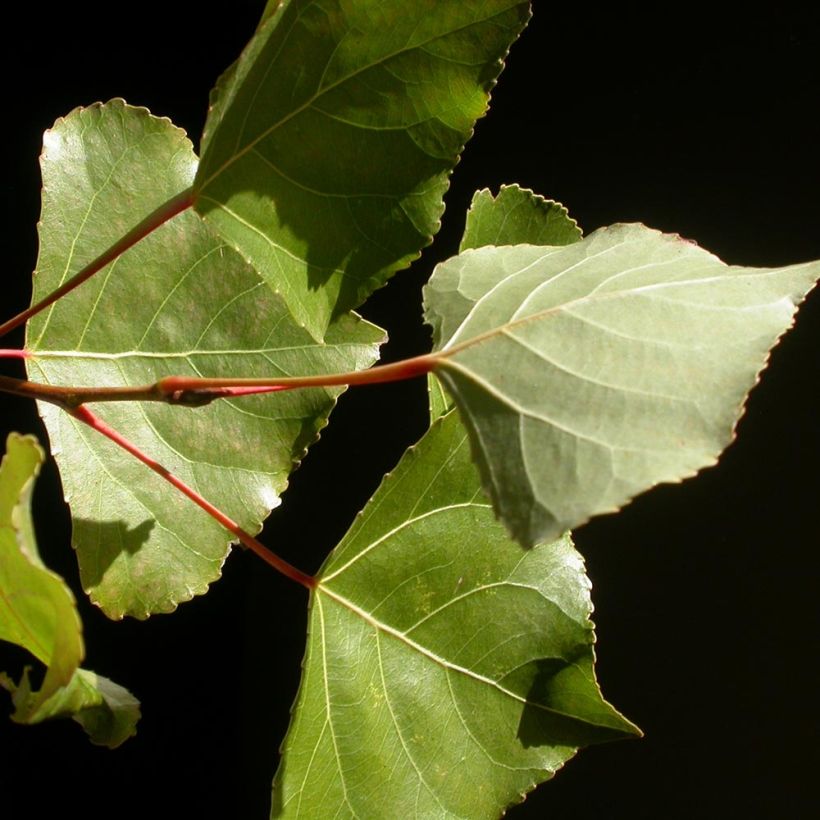

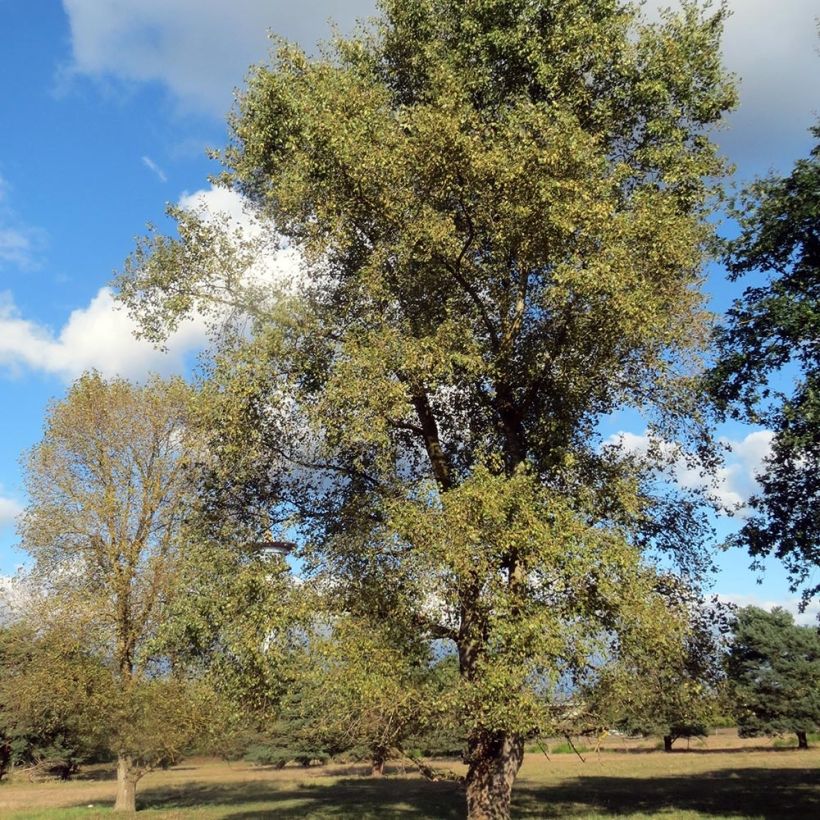

Plant habit
Flowering
Foliage
Botanical data
Populus
x canadensis x euramericana
Robusta
Salicaceae
Canadian poplar, Hybrid black poplar, Carolina poplar
North America
Other Populus - Poplar
Planting and care
Plant in deep, moist to wet, slightly acidic, neutral to alkaline or calcareous soil. This cultivar even adapts to poor and sandy soils if they remain fresh. However, it requires a sunny exposure. This tree prefers the edges of rivers and alluvial valleys. However, it tolerates normal soils in a well-watered climate. It also tolerates polluted atmospheres and salinity. It is sometimes said to be sensitive to frost in very cold areas, probably due to its early leafing in spring. If necessary, maintenance pruning should be carried out before vegetation resumes, by removing diseased or dead wood and overlapping branches.
Planting period
Intended location
Care
This item has not been reviewed yet - be the first to leave a review about it.
Haven't found what you were looking for?
Hardiness is the lowest winter temperature a plant can endure without suffering serious damage or even dying. However, hardiness is affected by location (a sheltered area, such as a patio), protection (winter cover) and soil type (hardiness is improved by well-drained soil).

Photo Sharing Terms & Conditions
In order to encourage gardeners to interact and share their experiences, Promesse de fleurs offers various media enabling content to be uploaded onto its Site - in particular via the ‘Photo sharing’ module.
The User agrees to refrain from:
- Posting any content that is illegal, prejudicial, insulting, racist, inciteful to hatred, revisionist, contrary to public decency, that infringes on privacy or on the privacy rights of third parties, in particular the publicity rights of persons and goods, intellectual property rights, or the right to privacy.
- Submitting content on behalf of a third party;
- Impersonate the identity of a third party and/or publish any personal information about a third party;
In general, the User undertakes to refrain from any unethical behaviour.
All Content (in particular text, comments, files, images, photos, videos, creative works, etc.), which may be subject to property or intellectual property rights, image or other private rights, shall remain the property of the User, subject to the limited rights granted by the terms of the licence granted by Promesse de fleurs as stated below. Users are at liberty to publish or not to publish such Content on the Site, notably via the ‘Photo Sharing’ facility, and accept that this Content shall be made public and freely accessible, notably on the Internet.
Users further acknowledge, undertake to have ,and guarantee that they hold all necessary rights and permissions to publish such material on the Site, in particular with regard to the legislation in force pertaining to any privacy, property, intellectual property, image, or contractual rights, or rights of any other nature. By publishing such Content on the Site, Users acknowledge accepting full liability as publishers of the Content within the meaning of the law, and grant Promesse de fleurs, free of charge, an inclusive, worldwide licence for the said Content for the entire duration of its publication, including all reproduction, representation, up/downloading, displaying, performing, transmission, and storage rights.
Users also grant permission for their name to be linked to the Content and accept that this link may not always be made available.
By engaging in posting material, Users consent to their Content becoming automatically accessible on the Internet, in particular on other sites and/or blogs and/or web pages of the Promesse de fleurs site, including in particular social pages and the Promesse de fleurs catalogue.
Users may secure the removal of entrusted content free of charge by issuing a simple request via our contact form.
The flowering period indicated on our website applies to countries and regions located in USDA zone 8 (France, the United Kingdom, Ireland, the Netherlands, etc.)
It will vary according to where you live:
- In zones 9 to 10 (Italy, Spain, Greece, etc.), flowering will occur about 2 to 4 weeks earlier.
- In zones 6 to 7 (Germany, Poland, Slovenia, and lower mountainous regions), flowering will be delayed by 2 to 3 weeks.
- In zone 5 (Central Europe, Scandinavia), blooming will be delayed by 3 to 5 weeks.
In temperate climates, pruning of spring-flowering shrubs (forsythia, spireas, etc.) should be done just after flowering.
Pruning of summer-flowering shrubs (Indian Lilac, Perovskia, etc.) can be done in winter or spring.
In cold regions as well as with frost-sensitive plants, avoid pruning too early when severe frosts may still occur.
The planting period indicated on our website applies to countries and regions located in USDA zone 8 (France, United Kingdom, Ireland, Netherlands).
It will vary according to where you live:
- In Mediterranean zones (Marseille, Madrid, Milan, etc.), autumn and winter are the best planting periods.
- In continental zones (Strasbourg, Munich, Vienna, etc.), delay planting by 2 to 3 weeks in spring and bring it forward by 2 to 4 weeks in autumn.
- In mountainous regions (the Alps, Pyrenees, Carpathians, etc.), it is best to plant in late spring (May-June) or late summer (August-September).
The harvesting period indicated on our website applies to countries and regions in USDA zone 8 (France, England, Ireland, the Netherlands).
In colder areas (Scandinavia, Poland, Austria...) fruit and vegetable harvests are likely to be delayed by 3-4 weeks.
In warmer areas (Italy, Spain, Greece, etc.), harvesting will probably take place earlier, depending on weather conditions.
The sowing periods indicated on our website apply to countries and regions within USDA Zone 8 (France, UK, Ireland, Netherlands).
In colder areas (Scandinavia, Poland, Austria...), delay any outdoor sowing by 3-4 weeks, or sow under glass.
In warmer climes (Italy, Spain, Greece, etc.), bring outdoor sowing forward by a few weeks.

































